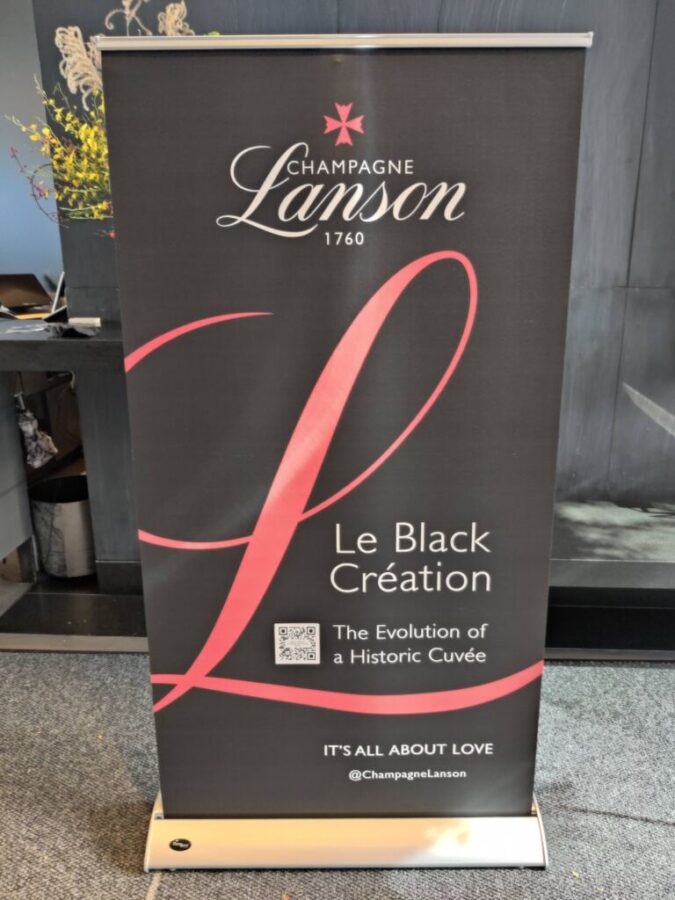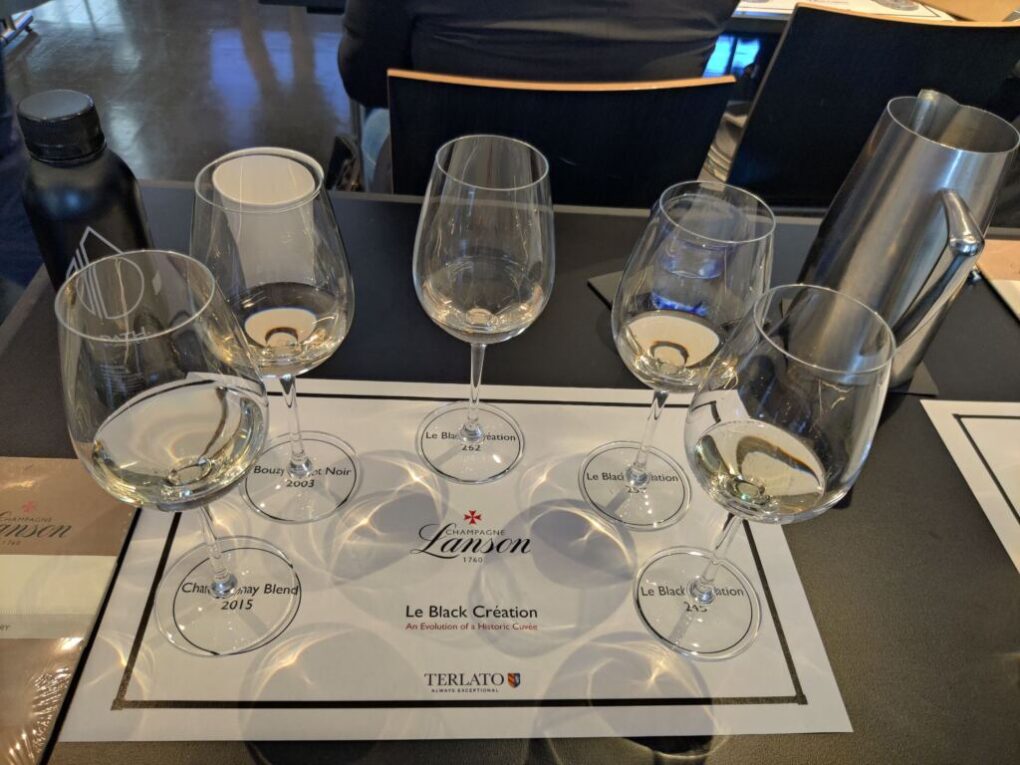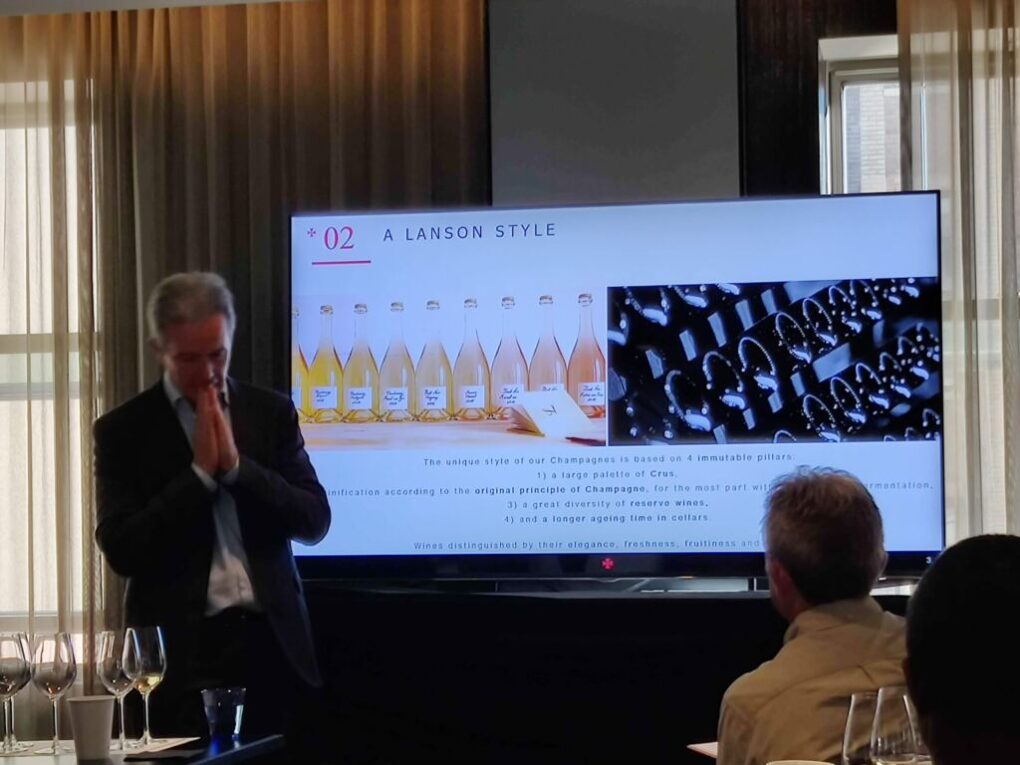
Lanson is a renowned champagne house with a storied heritage dating back to 1760, making it one of the oldest and most respected champagne producers in the world. Situated in Reims, in the heart of the Champagne region in France, Lanson has built an enduring reputation for its commitment to traditional winemaking methods and a dedication to preserving the natural characteristics of the classic champagne grapes Chardonnay, Pinot Noir, and Pinot Meunier in the production of all its champagnes.
One of Lanson’s most iconic offerings has been the Lanson Black Label Champagne collection. The vibrant, fresh, and well-structured Lanson Black Label Brut has been celebrated for its consistent quality and timeless style. The Black Label collection embodied the essence of Lanson’s winemaking philosophy and emphasized a non-malolactic fermentation process that contributed to the champagne’s longevity and purity.
Lanson recently launched the numbered, non-vintage (NV) Le Black Création Brut Champagne collection. It replaces the Lanson Black Label Champagne brand and represents a contemporary and innovative approach to champagne production that emphasizes greater transparency in winemaking. In an effort to more fully convey the finer points of the production process from harvesting to bottling, as well as the effects of climate on each of these stages to the consumer, every bottle of Le Black Creation will come with a QR code that can be scanned to reveal the exact details of the brut non-vintage blend.

Le Black Création is made up of a unique blend of the dominant and youngest vintage, and a selection of reserve wines from past harvests. The reserve wines used for each Le Black Création varies, but the style, always fresh and crisp (qualities that reflect the natural characteristics of the grapes used to create the champagne), coupled with a complexity and depth resulting from a vinification process involving the combination of a “perpetual reserve” wine derived from past blends aged in stainless steel, with others aged in oak barrels, showcases the expertise of Lanson’s seasoned winemaker, Hervé Dantan.

Like the Lanson Black Label Champagne, Le Black Création is produced using predominantly non-malolactic fermentation (76%), a process that helps to preserve the natural citrus and orchard fruit character of the grapes in the champagne. As for the number “257”? Le Black Création “257” refers to the 257th blend the venerable Lanson champagne house has produced since it was founded in 1760.


Below, please find more details about the Le Black Création 257 (scheduled to arrive in the United States in early 2024):
Number of Crus: 95 (including 50 Grand and Premier Crus)
Harvest 2017 (55% of the blend)
Reserve wines (45% of the blend (including 19% vintage reserve wines aged in stainless-steel tanks
from harvest years 2008, 2010, 2012, 2013, 2014, 2015, and 2016, 21% perpetual reserve wines aged in stainless-steel tanks, and 5% perpetual reserve wines aged in barrels))
Aging: 4 years
Dosage: 8g/l
The harvests took place between the last week of August and the second week of September in 2017. An unusually mild winter and early spring gave way to frost in mid-April that damaged the vines. This was followed by a warm and sun-drenched summer that culminated in heavy and sustained rain, coupled with intervals of hail that hastened the onset of mold. As a result, the grapes were harvested ahead of schedule. Nevertheless, these weather conditions helped to yield particularly elegant and fresh Chardonnay, intensely fruity Pinot Noir, and very supple and round Pinot Meunier.
Tasting Notes:
Aromas of citrus and orchard fruit, as well as baked bread, and almond.
Notes of lemon, grapefruit, and apple, as well as pear, brioche, and dried apricot.
Ideal serving temperature: 6-8°C
Pair with pastas in light sauces, simply prepared fish and seafood, and roasted vegetables.
Overall, Lanson continues to maintain its esteemed status in the champagne industry by upholding its rich legacy, while also embracing innovation and creativity to meet the evolving tastes and preferences of a new generation of champagne drinkers.

Be First to Comment